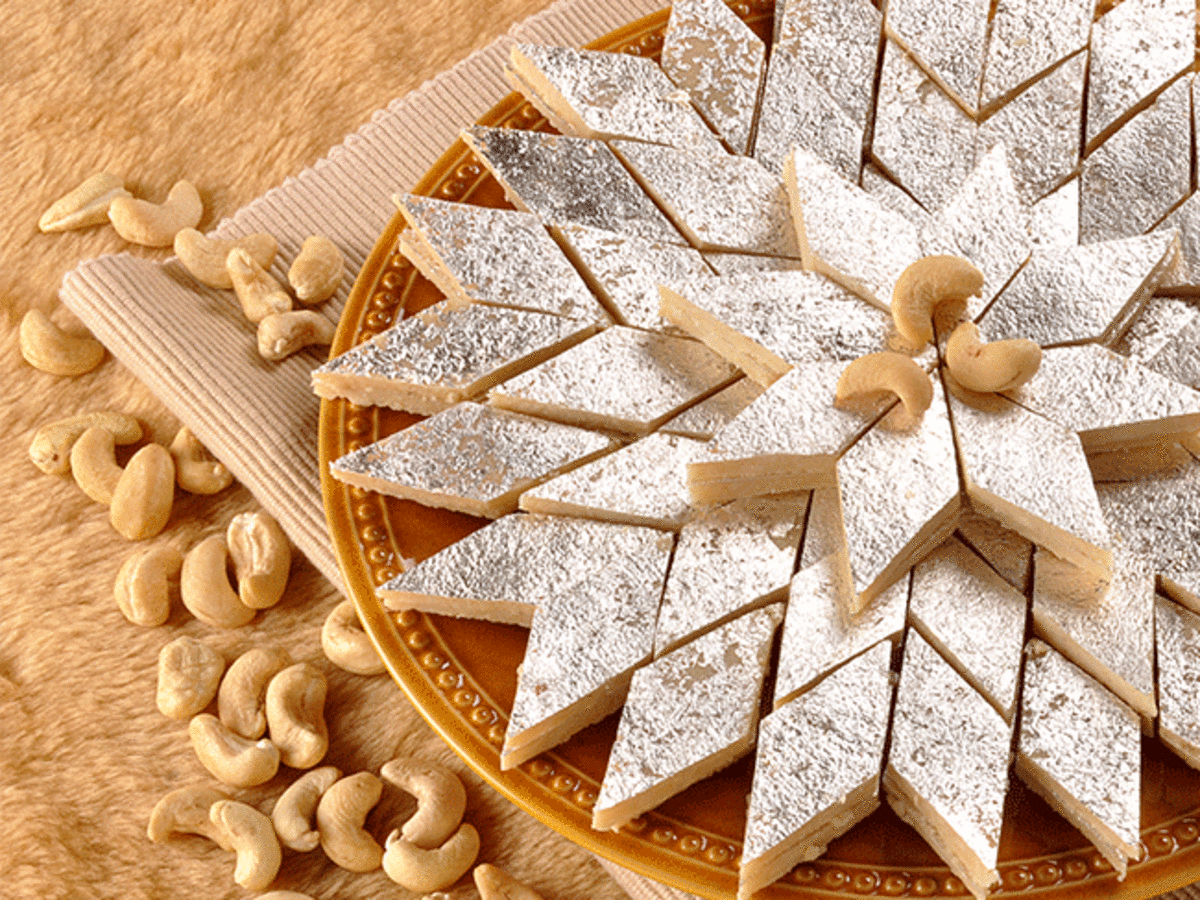Asian desserts offer a unique and exciting world of flavors and textures.
From sweet rice dishes to fruity treats, these desserts showcase the diverse culinary traditions of the continent.
You’ll find a wide range of ingredients and cooking methods used to create these tasty sweets.
Asian desserts often combine unexpected flavors and textures to create memorable treats.
Some popular options include fried bananas, mango sticky rice, and milk tea-inspired pastries.
These desserts can be a great way to explore new tastes and expand your culinary horizons.
Whether you’re looking for something light and refreshing or rich and indulgent, Asian desserts have something to satisfy every sweet tooth.
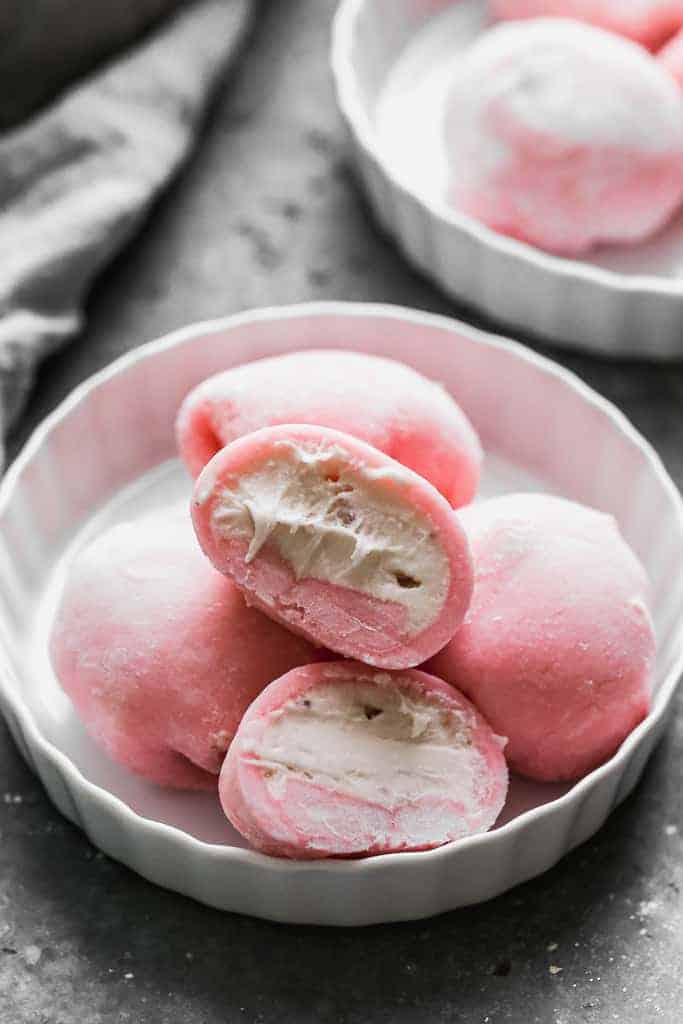
1. Mochi
Mochi is a beloved Japanese dessert made from pounded sticky rice. This chewy treat comes in many flavors and forms.
You can enjoy it plain or filled with sweet ingredients.
Popular fillings include red bean paste, ice cream, and fruit. Green tea mochi offers a unique taste for matcha lovers. Some versions have a dusting of potato starch or coconut flakes on the outside.
You can find mochi in many Asian grocery stores or make it at home.
It’s often eaten during special occasions like New Year’s. Mochi’s soft, stretchy texture makes it a fun dessert to eat and share with friends.
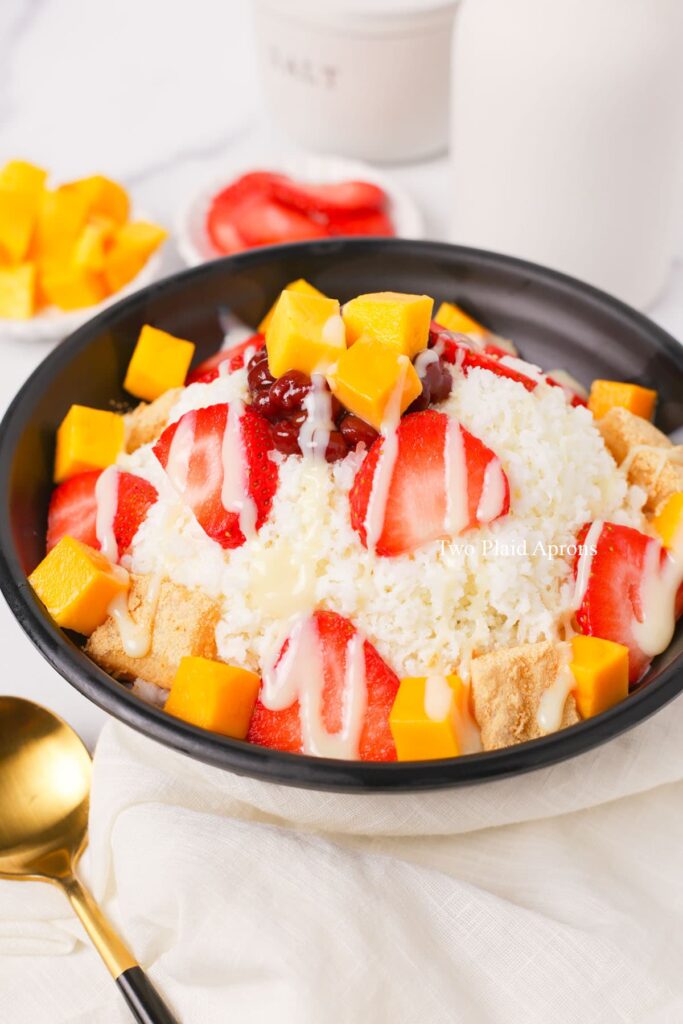
2. Bingsu
Bingsu is a popular Korean shaved ice dessert. You’ll love its light, fluffy texture and refreshing taste on a hot day.
The base is finely shaved ice made from a frozen milk mixture. This creates a snow-like consistency.
You can top bingsu with various ingredients.
Common choices include sweet red beans, fresh fruit, mochi, and condensed milk.
Mango bingsu is a fruity variation you might enjoy. It features mango puree and fresh mango chunks.
To make bingsu at home, freeze a milk mixture and shave it finely. Add your favorite toppings and dig in!
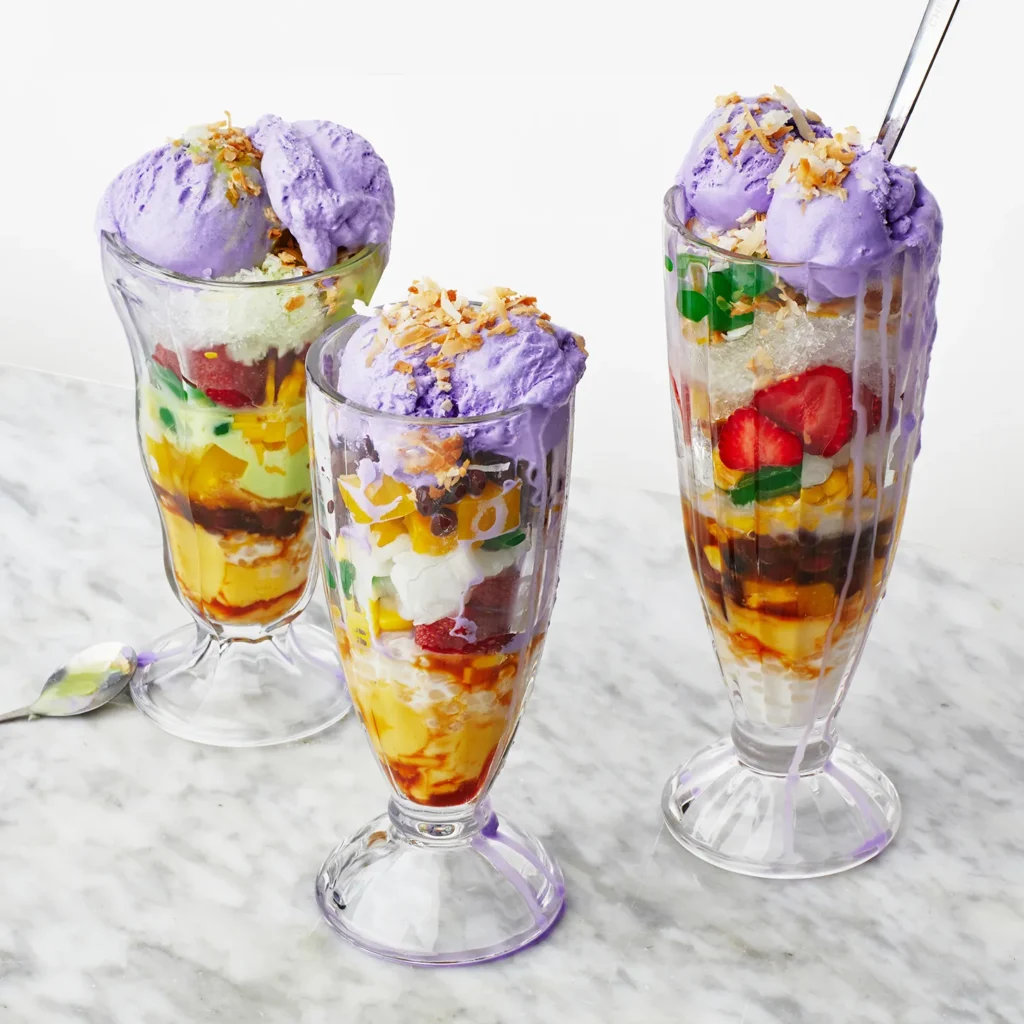
3. Halo-Halo
Halo-Halo is a popular Filipino dessert that means “mix-mix” in Tagalog. You’ll love this colorful treat on a hot day.
To make Halo-Halo, you layer sweet ingredients in a tall glass.
Common additions include red mung beans, white beans, nata de coco, and palm fruit.
Next, you add a generous amount of shaved ice on top. Pour evaporated milk over the ice for creaminess.
The final touch is a scoop of ice cream on top. Some people like to sprinkle nuts or rice crispies for extra crunch.
When eating Halo-Halo, mix all the ingredients together. This blends the flavors and textures for a refreshing, sweet experience.
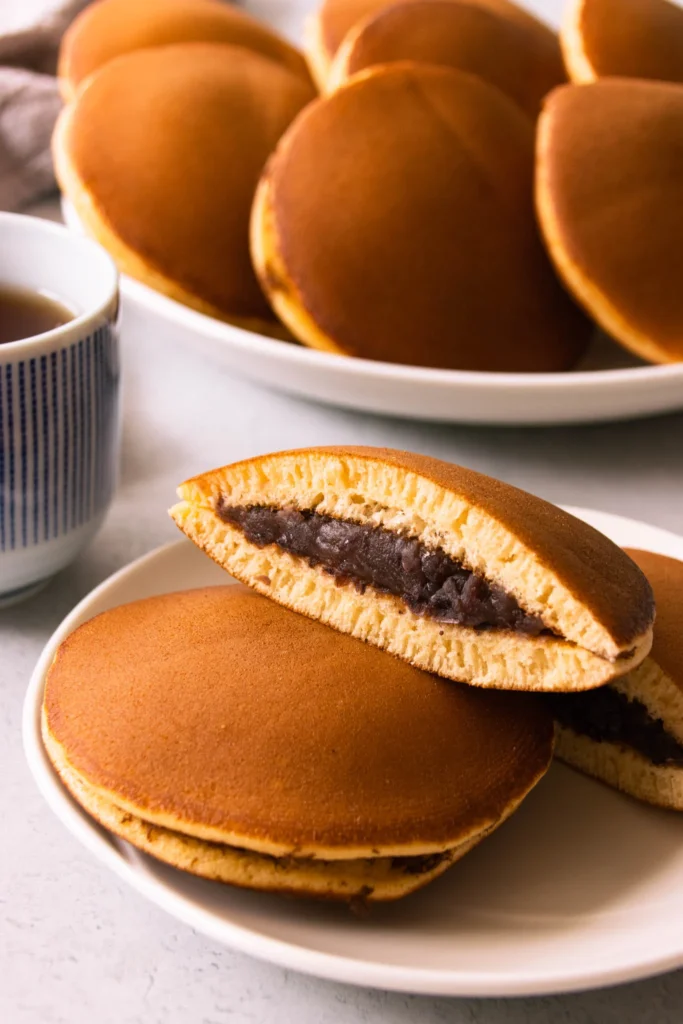
4. Dorayaki
Dorayaki is a popular Japanese dessert made of two small pancakes with a sweet filling. The pancakes are honey-flavored and have a fluffy texture.
The most common filling is anko, a sweet red bean paste. Other fillings like custard or chocolate are sometimes used too.
To make dorayaki, you mix eggs, sugar, honey, and flour to create a batter.
Cook small round pancakes in a pan until golden brown. Let them cool, then spread filling on one pancake and top with another.
You can find dorayaki in Japanese shops and cafes. It’s a tasty treat enjoyed by people of all ages.
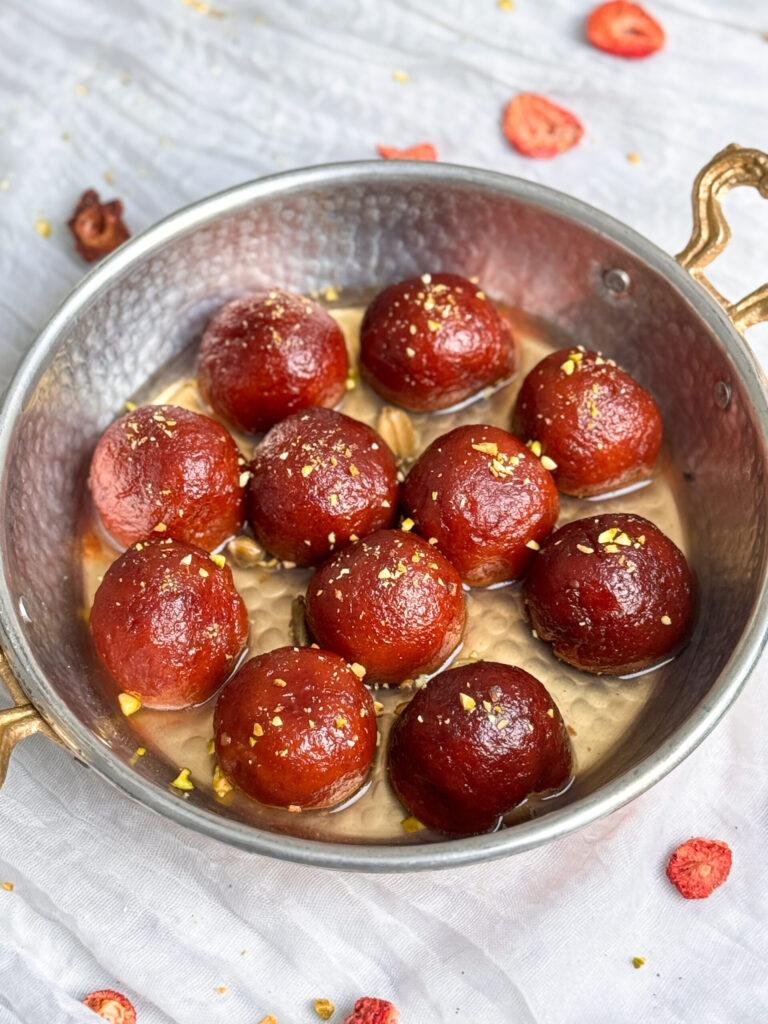
5. Gulab Jamun
Gulab jamun is a beloved Indian dessert that will delight your taste buds. These small, round treats are made from a dough of milk solids and flour, then deep-fried until golden brown.
After frying, the balls are soaked in a sweet syrup flavored with rose water or cardamom. This gives them their signature soft, spongy texture and rich, sweet taste.
You can enjoy gulab jamun warm or at room temperature.
They’re often served at special occasions and festivals in India. Some variations include adding nuts to the dough or infusing the syrup with different flavors.
To make gulab jamun at home, you’ll need milk powder, flour, and ghee for the dough.
The syrup is made with sugar, water, and rose water. With practice, you can create these delicious treats in your own kitchen.
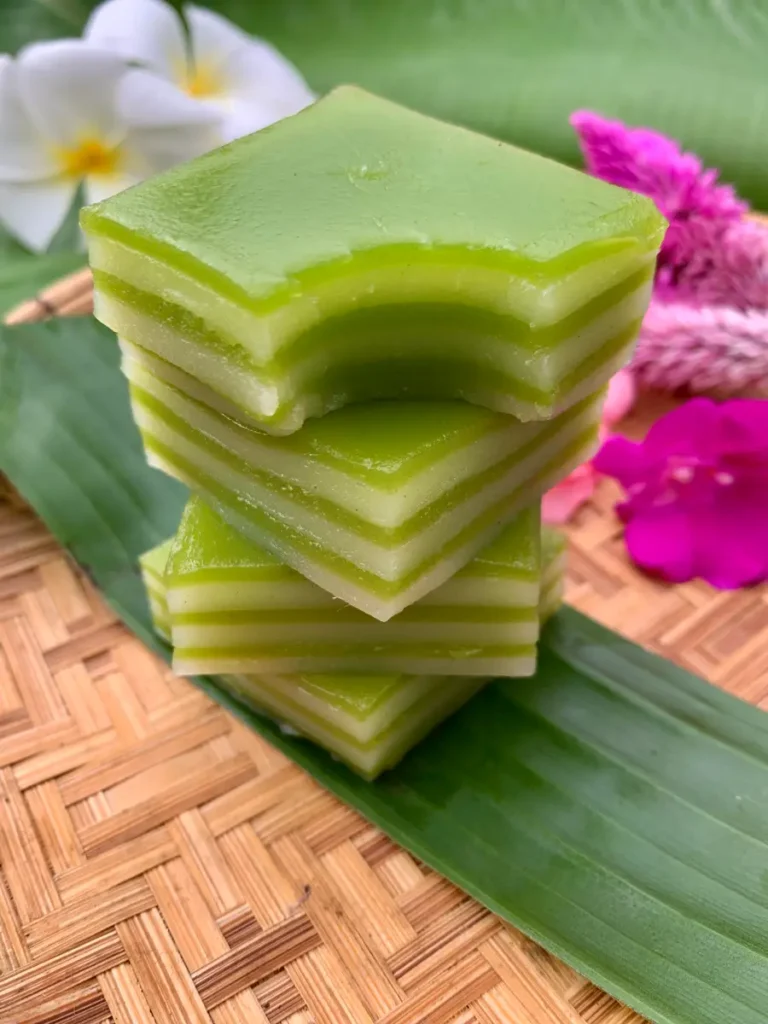
6. Khanom Chan
Khanom Chan is a traditional Thai layered dessert that will delight your taste buds. This sweet treat is made with rice flour, tapioca starch, coconut milk, and sugar.
The dessert gets its distinctive green color from pandan leaves, which also add a unique flavor. Khanom Chan is steamed in layers, creating a beautiful striped appearance.
You’ll find this dessert has a soft, slightly chewy texture. Its mild sweetness comes from the coconut milk and sugar.
Khanom Chan is often served at special events and celebrations in Thailand.
Making Khanom Chan requires patience and skill. Each layer must be steamed separately before adding the next.
The result is a visually striking and delicious dessert that’s worth the effort.
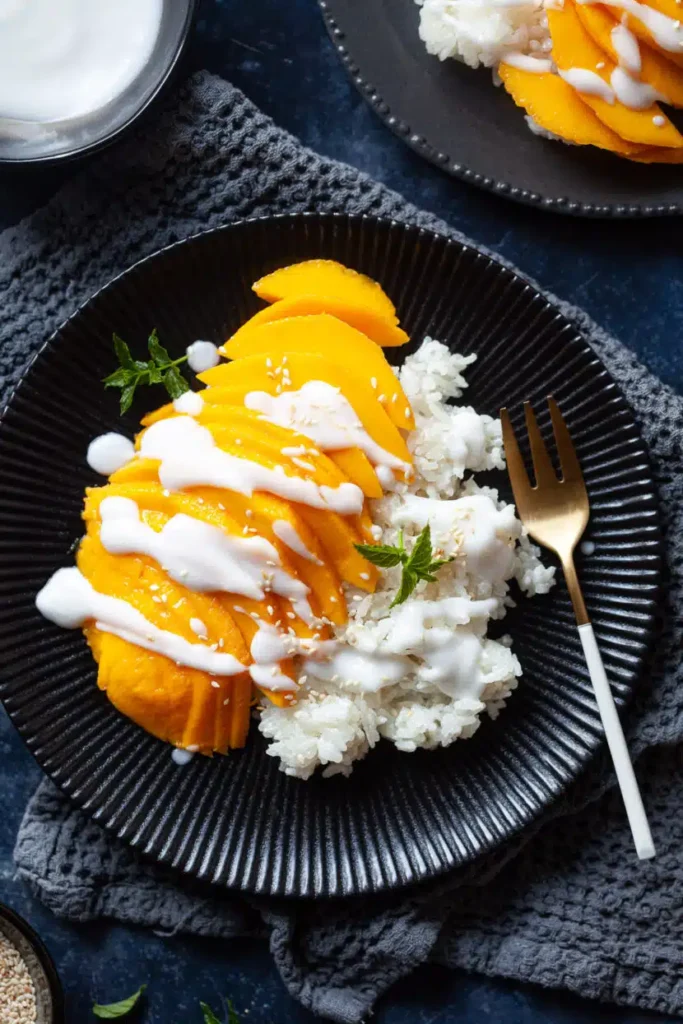
7. Mango Sticky Rice
Mango sticky rice is a beloved Thai dessert that combines sweet and creamy flavors. You’ll love the contrast between the warm, sticky rice and cool, juicy mango slices.
To make it, you steam glutinous rice until tender. Then mix it with warm coconut milk, sugar, and salt. This creates a sweet, sticky base for the dish.
Serve the rice alongside slices of ripe mango. For extra richness, drizzle more coconut cream on top. Some versions add toasted sesame seeds or mung beans for crunch.
You can find mango sticky rice at Thai restaurants or make it at home.
It’s a refreshing treat perfect for warm days.

8. Bibingka
Bibingka is a beloved Filipino rice cake that will delight your taste buds. This sweet treat is made with rice flour, coconut milk, and eggs, resulting in a soft and fluffy texture.
To make bibingka, you’ll mix the ingredients into a smooth batter. Then pour it into a pan lined with banana leaves for an authentic touch. The cake is typically baked until golden brown on top.
You can enjoy bibingka plain or with various toppings.
Popular choices include grated coconut, cheese, or a pat of butter. Some versions also incorporate macapuno, a type of coconut string.
Bibingka is often eaten during Christmas season in the Philippines. But you can savor this delicious dessert any time of year for a taste of Filipino cuisine.

9. Chè Ba Màu
Chè Ba Màu is a colorful Vietnamese dessert that will delight your taste buds. Its name means “three-color dessert” in English.
This refreshing treat features layers of red beans, mung beans, and pandan jelly. A sweet coconut sauce ties all the flavors together.
To make Chè Ba Màu, you’ll cook the beans separately and prepare the pandan jelly. Then, layer these ingredients in a glass.
Top it off with crushed ice and coconut sauce for a cool, satisfying dessert. The mix of textures and flavors makes it a favorite in Vietnam.
You can enjoy Chè Ba Màu any time of year, but it’s especially good on hot days.
It’s both a snack and a dessert that’s sure to impress.
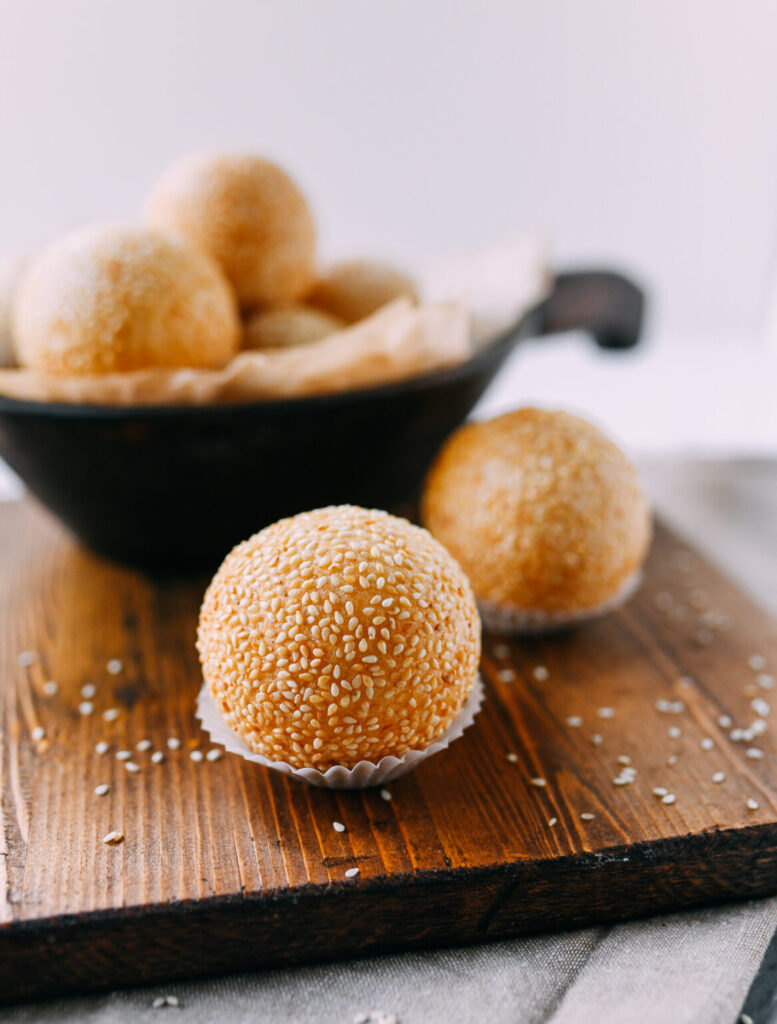
10. Sesame Balls
Sesame balls are a beloved Asian dessert made from glutinous rice flour. These crispy, chewy treats are coated in sesame seeds and filled with sweet red bean paste.
To make sesame balls, you mix glutinous rice flour with water and sugar to form a dough.
You then wrap small portions of red bean paste inside the dough and roll them into balls.
Next, you coat the balls in sesame seeds before deep-frying them.
As they cook, the balls expand and become hollow inside, creating a satisfying crunch when you bite into them.
Sesame balls are often served warm and make a delightful snack or dessert.
You can find them at many Chinese bakeries and dim sum restaurants.
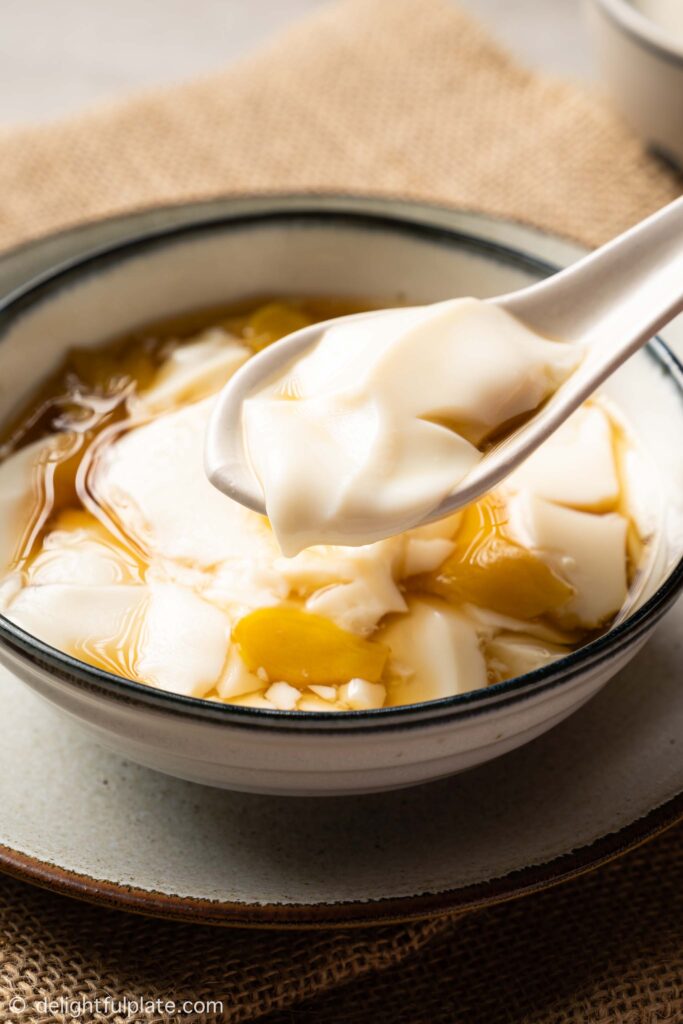
11. Sweet Tofu Pudding
Sweet tofu pudding is a beloved Asian dessert. You’ll find it in many Chinese and Southeast Asian cuisines.
This dessert features soft, silky tofu served with a sweet syrup. The tofu has a delicate texture that melts in your mouth.
You can enjoy sweet tofu pudding warm or cold. It’s often topped with ginger syrup for a spicy-sweet flavor.
To make it at home, you’ll need soy milk and a coagulant. The process is simple but requires careful timing.
You can serve sweet tofu pudding plain or add toppings like fruit or boba pearls.
It’s a light, refreshing treat perfect for hot days.
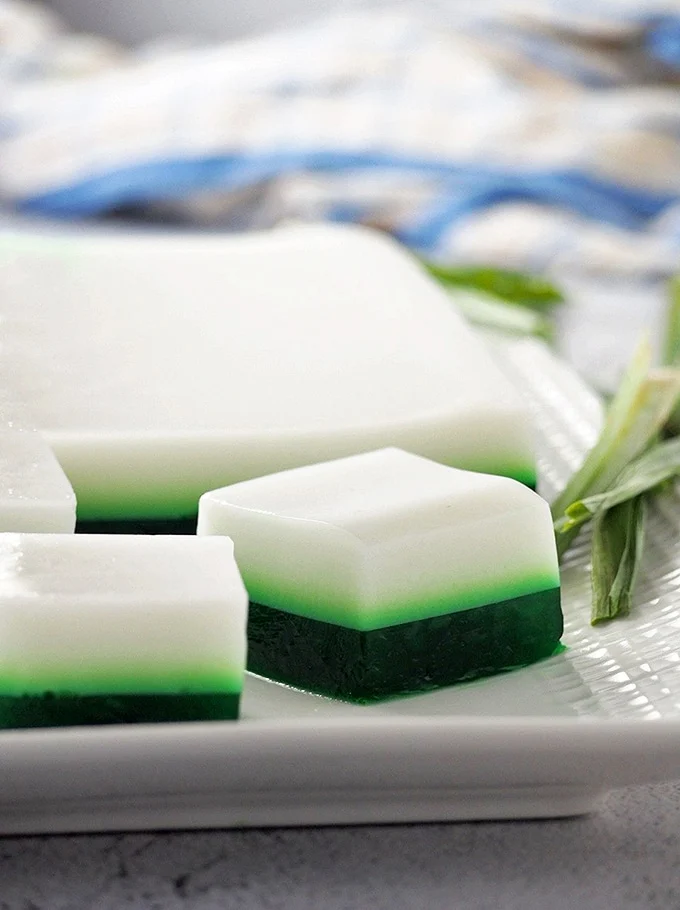
12. Coconut Jelly
Coconut jelly is a refreshing Asian dessert that’s easy to make at home. You’ll need coconut milk, coconut water, sugar, and gelatin or agar agar powder.
Mix the ingredients in a pot and heat them until the sugar and gelatin dissolve. Stir constantly to prevent clumping.
Pour the mixture into molds and let it cool.
The jelly sets as it chills in the fridge. You can add pandan leaves for extra flavor. Some recipes use coconut cream for a richer taste.
Coconut jelly has a smooth, silky texture. It’s often served cold and makes a great summer treat.
You can garnish it with fresh fruit or eat it plain.
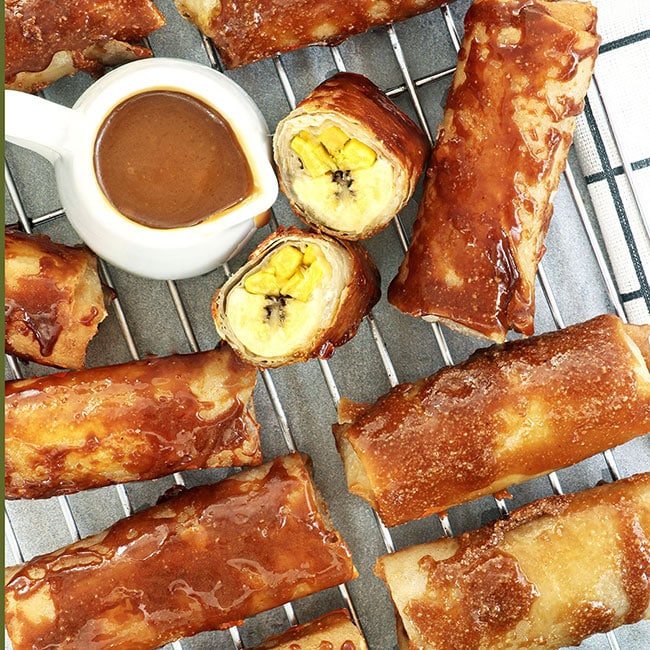
13. Turon
Turon is a beloved Filipino dessert that combines sweet bananas and crispy texture. You’ll find sliced bananas wrapped in thin spring roll wrappers, then fried until golden brown.
Some versions add jackfruit for extra flavor. The rolls are often coated in caramelized sugar for a crunchy, candy-like exterior.
To make turon, you roll banana slices in brown sugar before wrapping. Then fry them in hot oil for 2-3 minutes per side until crispy.
You can enjoy turon on its own or with a scoop of ice cream.
It’s a popular street food snack in the Philippines, but also makes a great homemade treat.
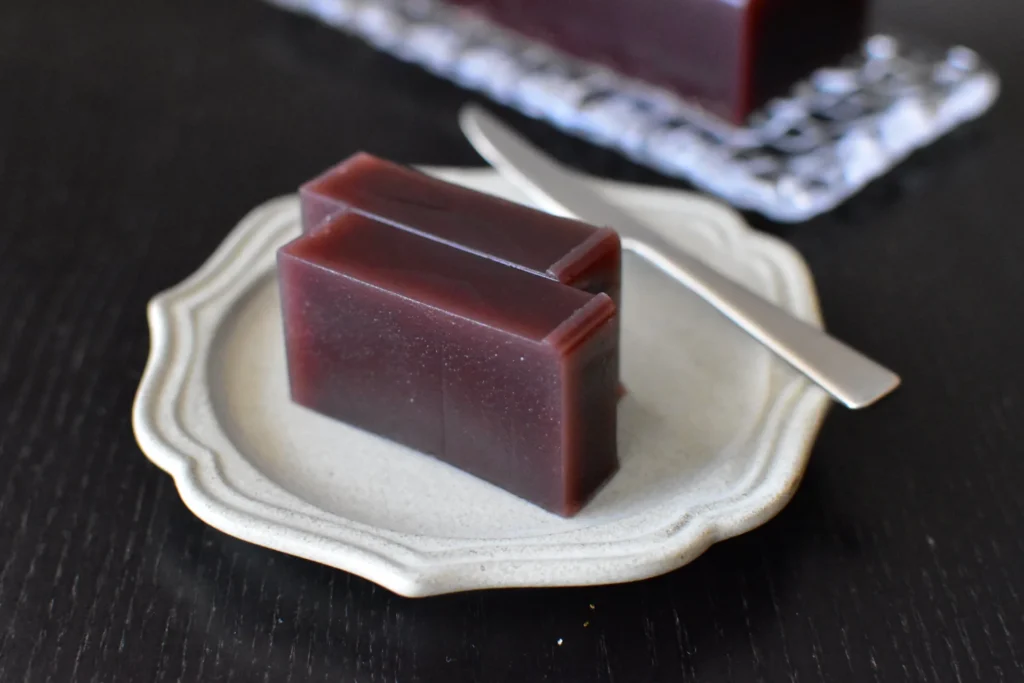
14. Yokan
Yokan is a beloved Japanese jelly dessert with a long history. This sweet treat is made from red bean paste, agar, and sugar. It comes in a block shape and has a smooth, firm texture.
You can find yokan in different flavors and styles. The most common type uses red azuki beans. Some versions include chestnuts, sweet potato, or matcha green tea.
Mizu yokan is a popular summer variation. It has a softer texture and higher water content, making it refreshing in hot weather. You can enjoy yokan chilled or at room temperature.
This dessert is often served with green tea.
It’s a tasty way to end a meal or have as an afternoon snack. Yokan’s simple ingredients and subtle sweetness make it a favorite among many Japanese sweets lovers.
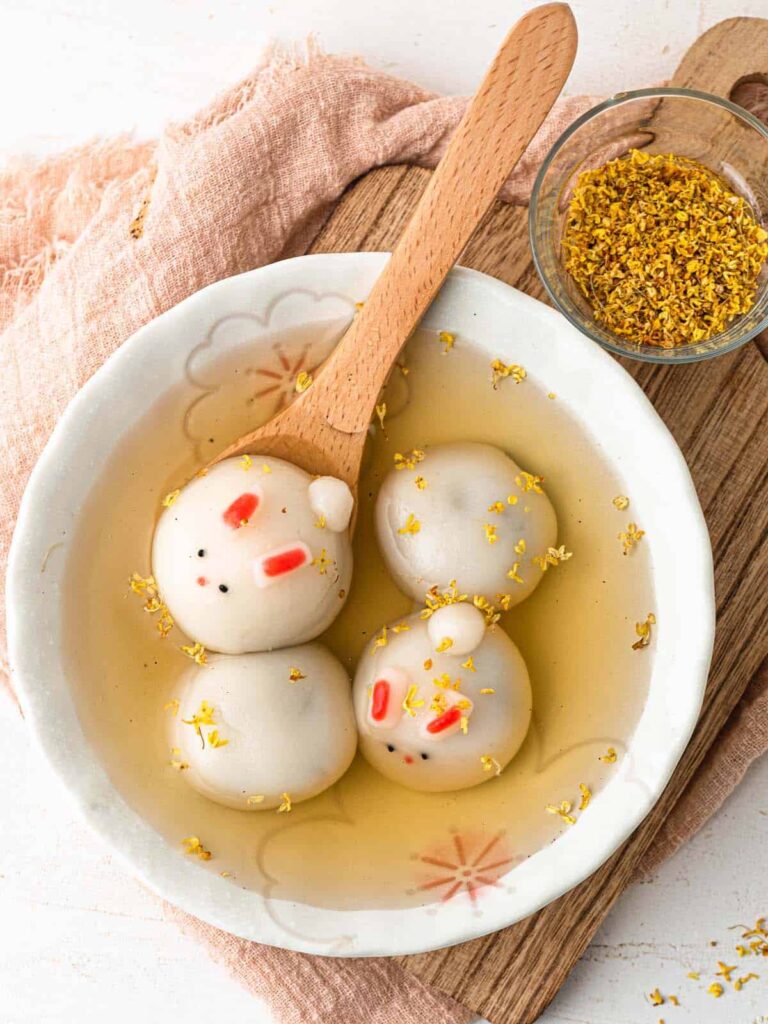
15. Tangyuan
Tangyuan are sweet glutinous rice balls popular in Chinese cuisine. These chewy treats are often served in a warm, sugary ginger soup.
You can find tangyuan with various fillings.
Common options include black sesame, peanut, and red bean paste. Some versions even feature fruit fillings for a unique twist.
To make tangyuan, you’ll need glutinous rice flour and water for the outer shell.
The dough is shaped into small balls, then boiled until they float.
Tangyuan is a traditional dessert often enjoyed during special occasions like the Lantern Festival. Its round shape symbolizes family togetherness in Chinese culture.
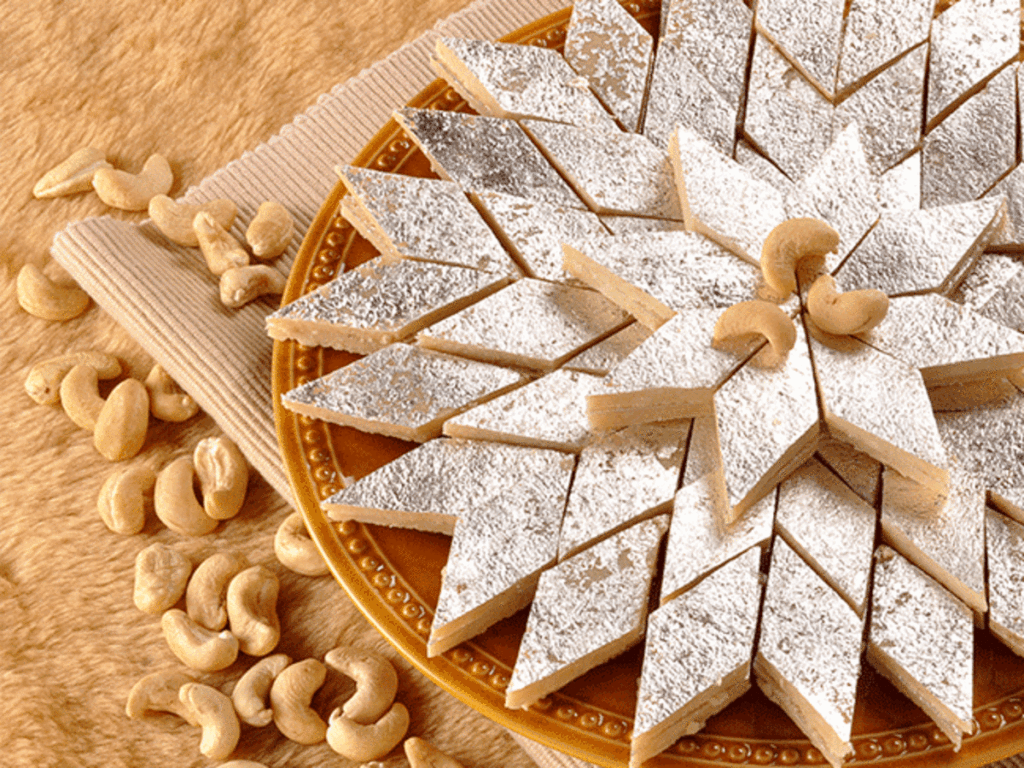
16. Kaju Katli
Kaju katli is a popular Indian sweet made from cashews. This diamond-shaped treat has a smooth, melt-in-your-mouth texture that you’ll love.
To make kaju katli, grind cashews into a fine powder. Mix this with sugar and a splash of water. Cook the mixture on low heat, stirring constantly until it thickens.
Add a touch of cardamom or rose water for extra flavor. Once cooled, roll out the dough and cut it into diamond shapes.
You can find kaju katli at Indian sweet shops or try making it at home.
It’s often given as a gift during festivals and celebrations.
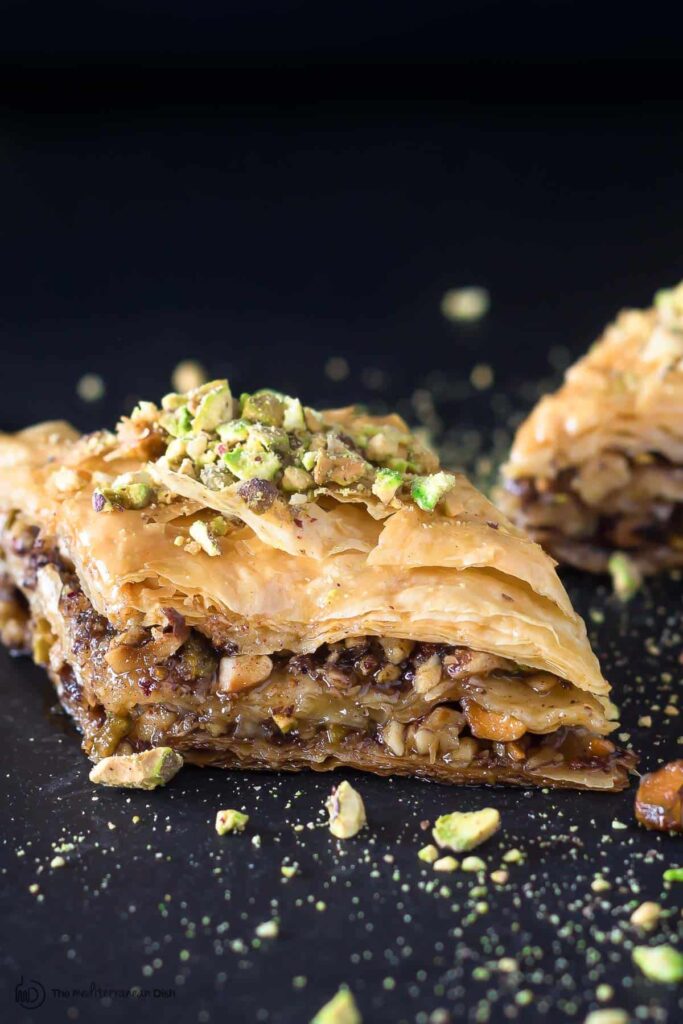
17. Baklava
Baklava is a sweet treat you’ll find across many Asian countries. It’s made of thin layers of phyllo dough stacked with chopped nuts in between. The whole thing is soaked in sweet syrup or honey.
You can enjoy different types of baklava. Some use pistachios, while others have walnuts or almonds. The syrup might be flavored with rose water or orange blossom.
When you bite into baklava, you’ll taste a mix of crispy and soft textures. The nuts give a nice crunch, while the syrup makes it sticky and sweet.
It’s often served as a dessert or with tea.
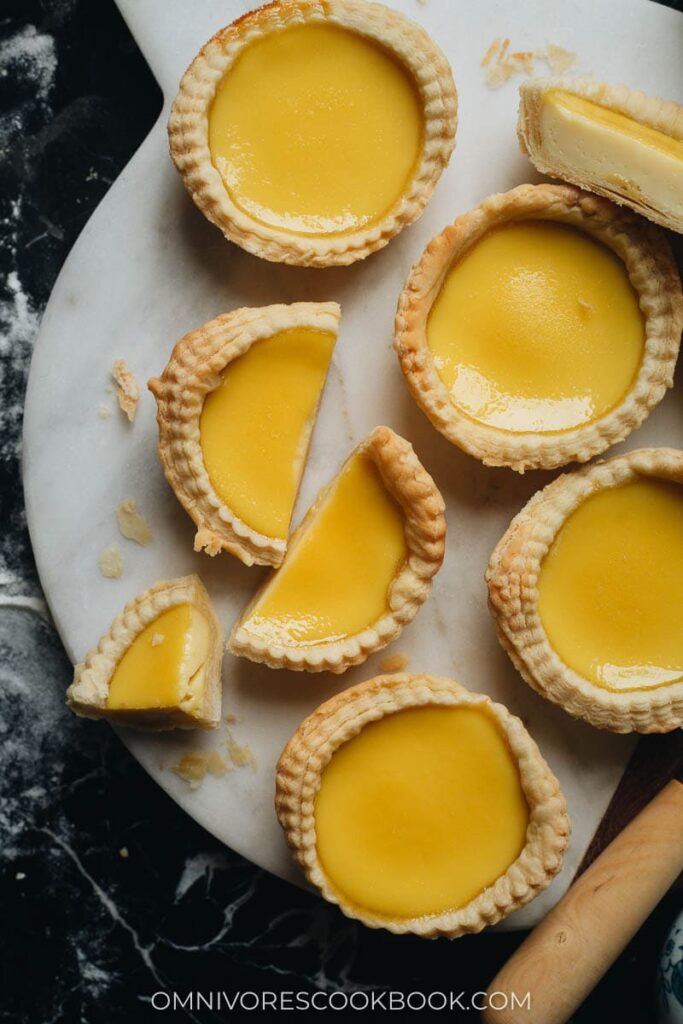
18. Egg Tart
Egg tarts are a beloved Asian dessert, especially popular in Hong Kong and Macau. These small pastries feature a flaky crust filled with a sweet egg custard.
You can find egg tarts in many dim sum restaurants and bakeries. The pastry crust can be made with either shortcrust or puff pastry, giving different textures.
To make egg tarts at home, start by preparing the pastry and shaping it into small tart shells. Mix eggs, sugar, and milk for the custard filling. Pour the mixture into the shells and bake until set.
Serve egg tarts warm for the best taste experience. The contrast between the crisp crust and silky custard makes them a delightful treat.
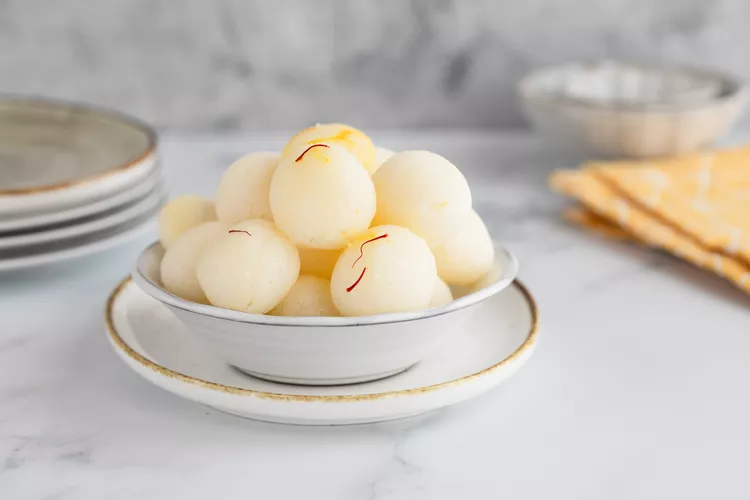
19. Rasgulla
Rasgulla is a popular dessert from eastern India. You’ll love these soft, spongy balls made from cottage cheese and cooked in sugar syrup.
The name comes from “ras” meaning juice and “gulla” meaning ball. When you bite into one, it releases a burst of sweet syrup.
To make rasgulla, you knead cottage cheese into a smooth dough. Then you form small balls and cook them in sugar syrup for 7-11 minutes.
You can enjoy rasgulla chilled or at room temperature.
It’s often served at celebrations and festivals in India. Some versions are flavored with rose water or cardamom for extra taste.
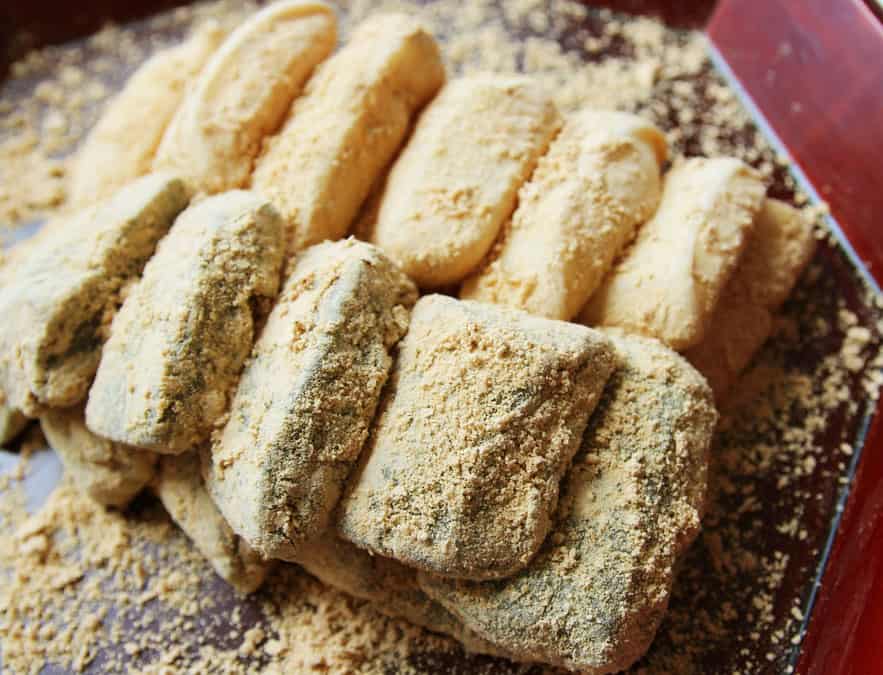
20. Injeolmi
Injeolmi is a beloved Korean sweet rice cake. You’ll love its chewy, sticky texture that’s similar to mochi.
This treat is made from glutinous rice flour and often coated with roasted soybean powder. You can enjoy injeolmi as a snack or dessert.
It’s popular at special events and festivals in Korea. The traditional method of making injeolmi involves steaming and pounding the rice, which takes time.
You can now make injeolmi quickly at home using a microwave. This modern approach lets you create this tasty treat in just 10 minutes.
Whether homemade or store-bought, you’ll find injeolmi to be a delightful introduction to Korean sweets.
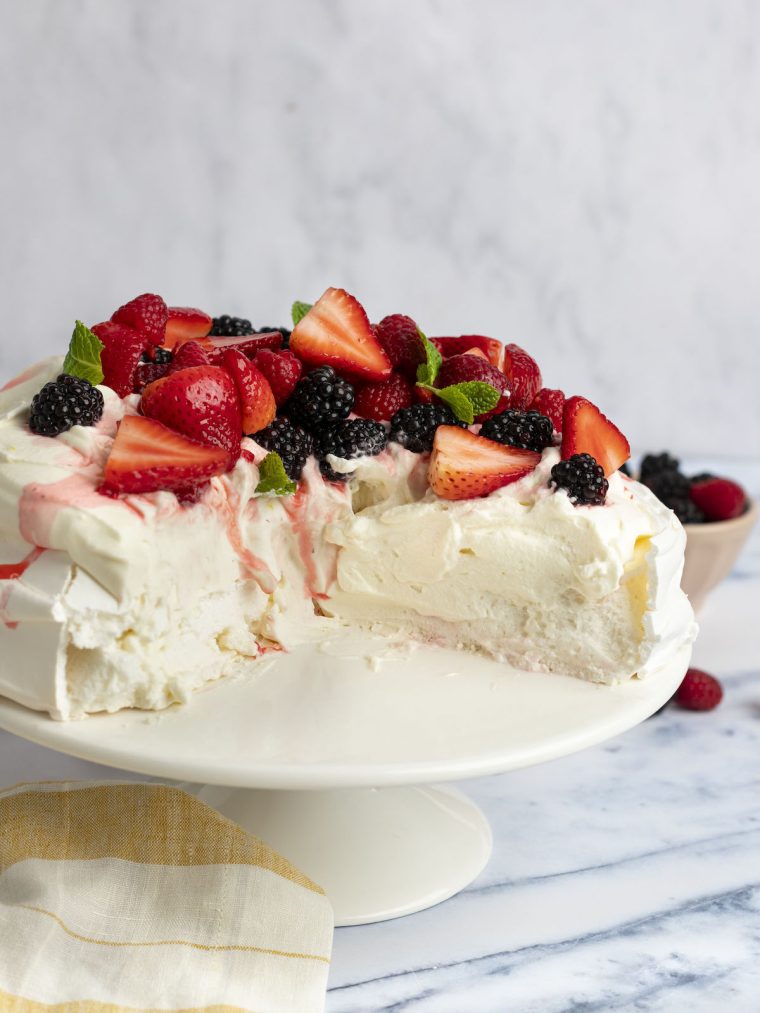
21. Pavlova
Pavlova is a popular dessert in Australia and New Zealand, but it’s also enjoyed in some Asian countries. This meringue-based treat has a crisp outer shell and a soft, marshmallow-like center.
You can top pavlova with fresh fruits like berries, kiwi, or mango. Whipped cream is often added for extra richness.
Some Asian variations include tropical fruits like lychee or passion fruit. To make pavlova, you whip egg whites with sugar until stiff peaks form.
Then you bake it slowly at a low temperature. The result is a light, airy dessert that’s perfect for warm weather.
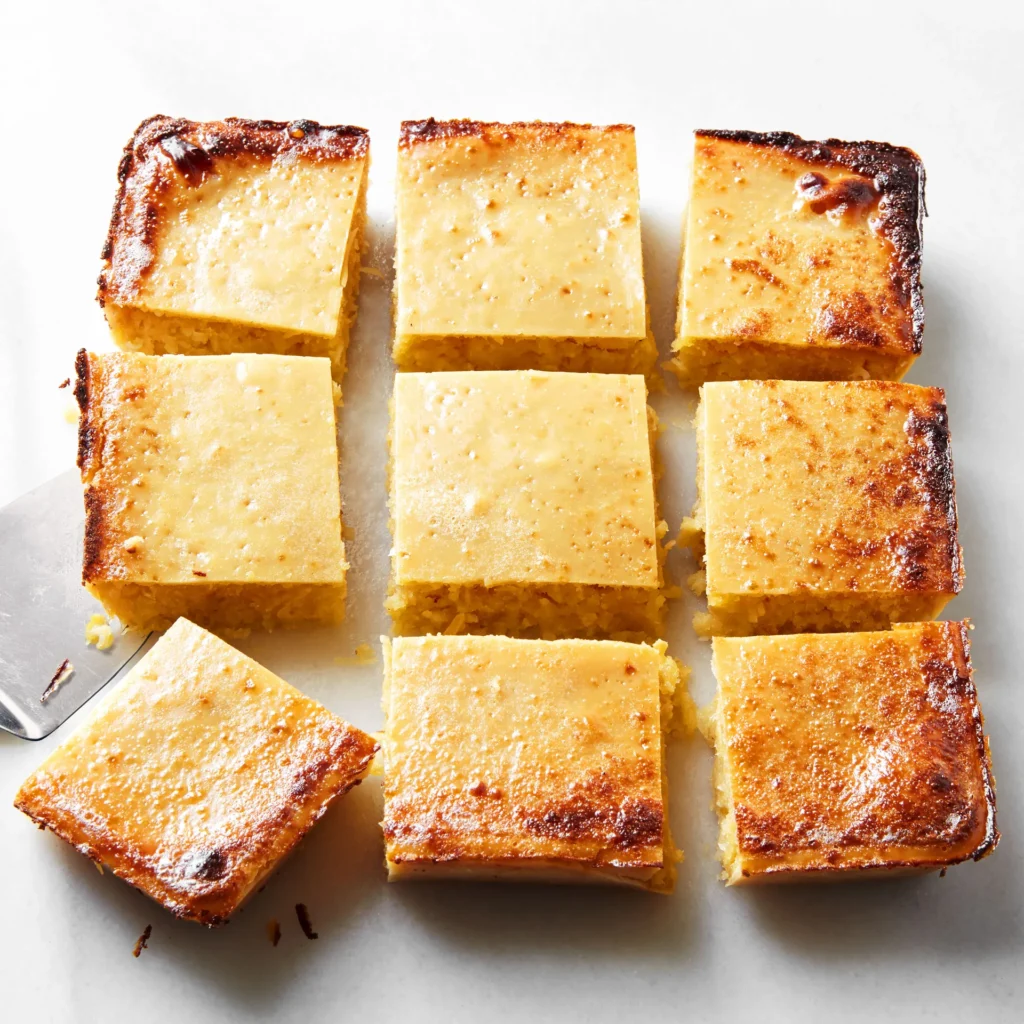
22. Cassava Cake
Cassava cake is a popular Asian dessert made from grated cassava root. You’ll find it in many Southeast Asian countries, especially the Philippines.
This sweet treat has a chewy texture and a rich, coconut flavor. It’s often made with coconut milk, condensed milk, and eggs.
You can enjoy cassava cake baked or steamed. The baked version has a crispy top layer, while the steamed one is softer.
Some recipes add grated coconut or cheese for extra flavor and texture. You can serve it warm or chilled, making it perfect for any time of day.
Try making this easy dessert at home. It’s great for sharing with family and friends at gatherings or special occasions.
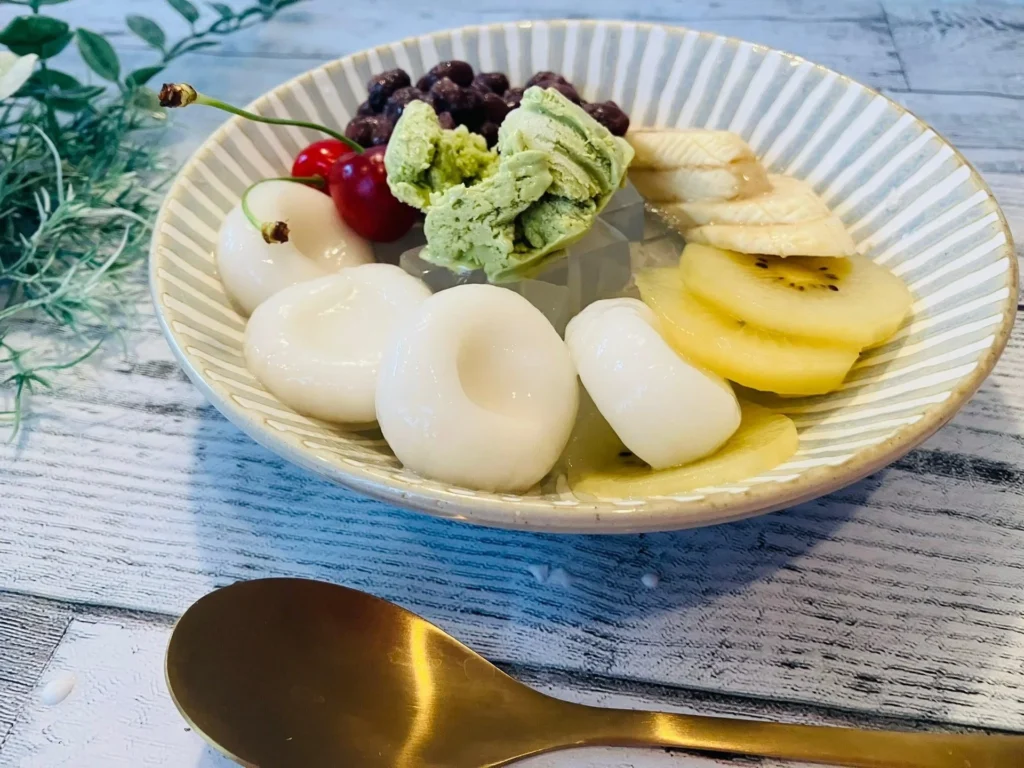
23. Anmitsu
Anmitsu is a refreshing Japanese dessert perfect for hot summer days. You’ll find a delightful mix of textures and flavors in this treat.
The base of anmitsu is cubes of agar jelly, which has a unique, slightly firm texture. Sweet red bean paste adds richness to the dish.
Fresh fruits like strawberries, kiwi, and banana bring color and natural sweetness. Chewy mochi balls called shiratama dango provide a satisfying bite.
To finish, you drizzle black sugar syrup (kuromitsu) over the top. Some versions include a scoop of matcha ice cream or whipped cream for extra indulgence.
You can easily customize anmitsu with your favorite fruits or toppings. It’s a light yet satisfying end to any meal.
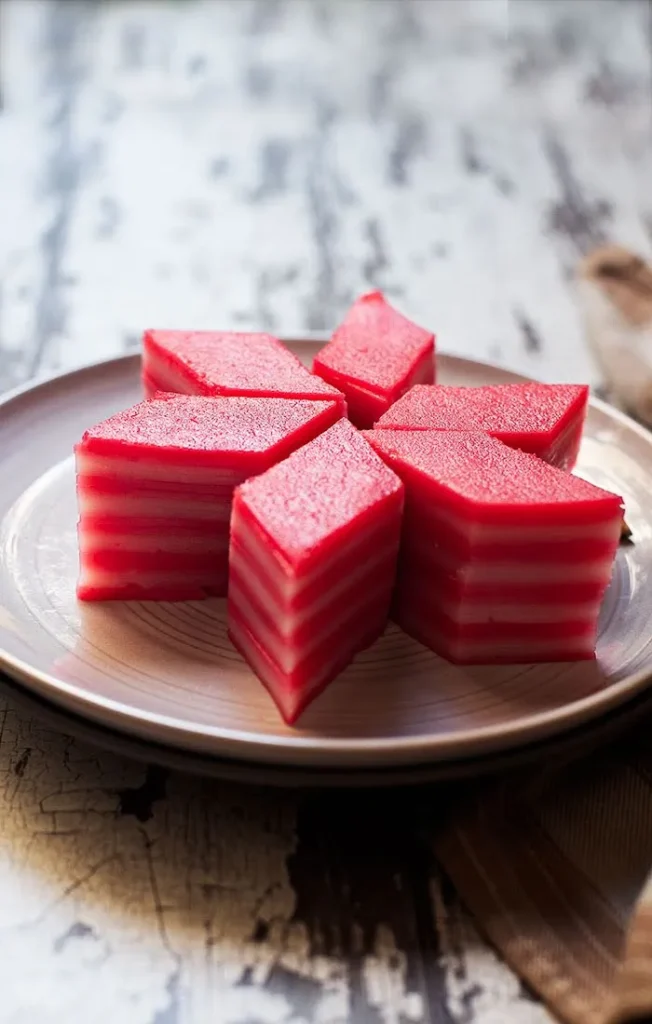
24. Kuih Lapis
Kuih Lapis is a popular Southeast Asian dessert known for its colorful layers. This steamed cake has a soft, jelly-like texture that melts in your mouth.
You’ll find Kuih Lapis in countries like Indonesia, Malaysia, and Singapore. It’s made with rice flour, tapioca starch, coconut milk, and sugar.
The cake gets its distinctive appearance from alternating colored layers. Common colors include white, green, and red.
Each layer is steamed separately, creating a beautiful striped effect when sliced. Kuih Lapis takes patience to make.
You need to steam each thin layer for about 5-7 minutes before adding the next. The process is repeated until you have 9 layers, giving it the name “Nine-Layer Cake” in some places.
Cultural Significance of Asian Desserts
Asian desserts play important roles in many cultures. They’re often tied to festivals, celebrations, and religious events.
These sweet treats carry deep meanings and traditions.
Regional Variations
In China, mooncakes symbolize unity during the Mid-Autumn Festival. You’ll find them in homes and shops across the country.
Japan’s mochi, made from pounded rice, is a New Year’s treat. It represents good fortune for the coming year.
In Southeast Asia, sticky rice desserts are common. Thailand’s mango sticky rice is a favorite.
You can enjoy it year-round, but it’s especially popular during mango season. India’s sweets vary by region.
In the north, you’ll find milk-based desserts like kheer. Southern India favors coconut in many of its treats.
Historical Origins
Many Asian desserts have roots in ancient traditions. China’s tangyuan, sweet rice balls in soup, dates back over 1,000 years. You’ll often see it at family reunions and weddings.
In Japan, wagashi (traditional sweets) began as offerings to the gods. Now, they’re art forms in their own right. You can find them in tea ceremonies and special events.
India’s kheer has been part of religious practices for thousands of years. It’s mentioned in ancient texts and is still used in ceremonies today.
Korean tteok (rice cakes) have a 2,000-year history. You’ll see them at most major celebrations, from birthdays to harvest festivals.
Common Ingredients in Asian Desserts
Asian desserts use unique ingredients that create distinct flavors and textures. Many recipes rely on traditional sweeteners that differ from Western sweets.
Unique Flavors and Textures
Asian desserts often feature ingredients that may seem unusual in Western sweets. Coconut milk adds creamy richness to many treats.
Red bean paste provides sweetness and texture in cakes and pastries. Matcha green tea powder gives a bitter-sweet taste and vibrant color.
Black sesame seeds offer a nutty flavor and dark appearance. Pandan leaves add a floral aroma to rice-based desserts.
Mochi, made from glutinous rice flour, creates a chewy texture loved in many Asian sweets. Agar agar, a plant-based gelatin, is used to make jelly-like desserts.
Traditional Sweeteners
Asian desserts often use less sugar than Western treats. Instead, they rely on natural sweeteners with unique flavors.
Palm sugar, made from palm tree sap, has a caramel-like taste. It’s common in Southeast Asian sweets.
Jaggery, an unrefined sugar from India, adds depth to desserts.
Honey is used in many Chinese and Korean recipes. Sweet rice syrup gives a mild sweetness to Korean treats.
Condensed milk adds richness and sweetness to Southeast Asian desserts.
Some recipes use fruit as natural sweeteners. Ripe mangoes and bananas are popular choices. These fruits add flavor and reduce the need for added sugars.
